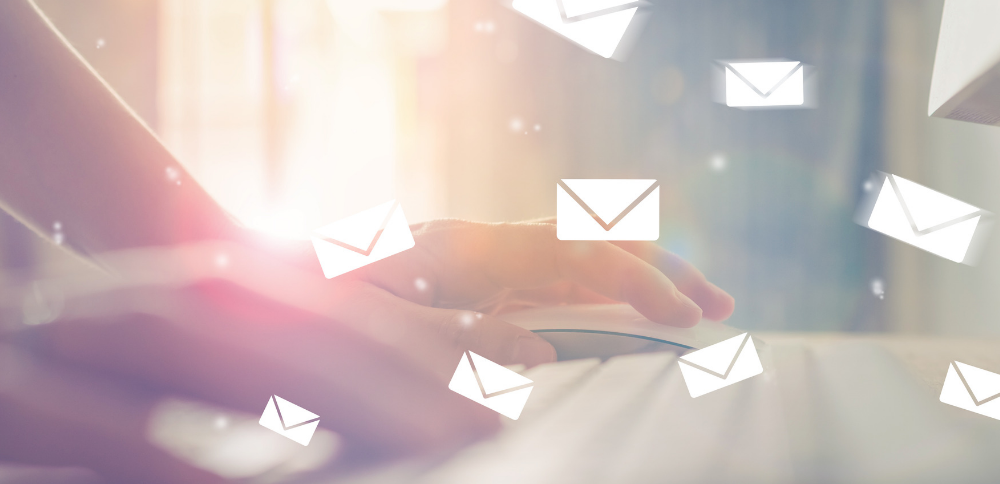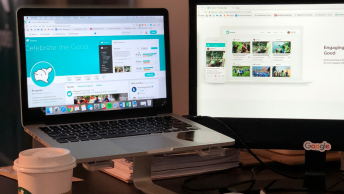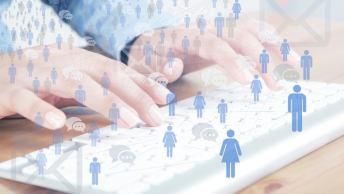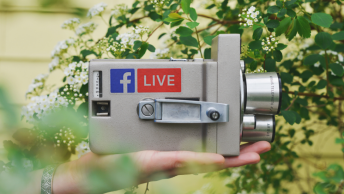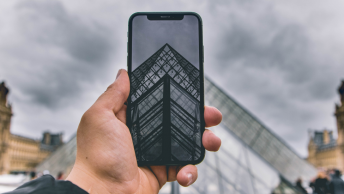You spend so much time working on building your email list, but then what do you do once people have signed up? Working on your onboarding email strategy will make sure that none of your email gathering efforts go to waste.
Step Up Your Onboarding Email Strategy
After getting audience sign up to your email list, you need to develop an effective email onboarding strategy.
All types of relationship and communications depend on trust. When you are on a date, you’ll definitely want to know this person before you go out with him or her. Would you knock on a stranger’s door and expect them to immediately go out with you? Of course not. The same principle applies to email marketing. Like dating, in email marketing, you will need permission to start communication.
Make your sign-up process easier for website visitors. When a user subscribes to your email lists and agrees to receive emails from you, it’s like saying, “Yeah, I would like to go on a date with you, I’m interested in what you have to offer.”
So, after you have subscribers. What happens next? Let’s discuss a 7-step practice to help you start thinking about your onboarding email strategy.
Onboarding Email Strategy Step 1: Welcome Subscribers
When you first meet new visitors to your site, you have to make a good first impression and build a trusting relationship. The same principle applies to how you onboard emails.This is why the first step in building a business relationship is to build trust from the very first email: your welcome email.
Having too much information in the welcome email can be overwhelming. No customer wants to receive an essay about how great your brand is and explanations on the features that they have no interest in. Saying too much right off the bat can be a turnoff to the new users utilizing your email list.
So what should your business say in your welcome emails?
Instead of going above and beyond talking about your features, or explaining what your business does, or trying to convince your customers, you should think about what you want your customers to actually do when they start using your product or service. Then make this goal the single call to action in your email.

Your first email is your opportunity to explain how useful your brand is to your email subscriber. This has to be done lightly and tastefully though. As previously mentioned, this isn’t the time to info dump. Keep it brief and fun with the promise of more to come.
Onboarding Email Strategy Step 2: Provide Motivation
Something that separates a good welcome message and a great welcome message is MOTIVATION. It means you are appealing to what customers actually want instead of just throwing everything at them.
Motivation can be used in many ways. I suggest trying to think about what the problems are that your customers want to solve when they subscribe. Then try to solve that problem.
Another strategy is to create a fear of missing out (FOMO). Fear can be a great motivator when used correctly. Hint at information coming that will be life changing that your customers can’t risk missing out on. This will keep them interested in the emails that you send while they wait for the information you’ve been teasing with.
SEE ALSO: How to Make Your Email More Visible in Gmail
Onboarding Email Strategy Step 3: Remove Barriers
It’s your job to use onboarding emails to answer new customers’ questions and ease any confusions. These can include how to use your product or service, and what value does your business bring?
These emails removing barriers to your products or brand can be used in many situations. They are actually triggered by customers’ behavior, and some are sent as reminders, or just as an enticement to move on to the next step.
If your customers are really having a hard time with a certain aspect of your brand, you can even use email to send them a video of your explanation. This will get a much better and more personal reception than if the same video is just floated out on YouTube.
Onboarding Email Strategy Step 4: Test Timing
The timing of your onboarding emails can have a significant impact on your conversions. For example, if you are offering a 14 day free trial of your product or service, how do you decide how many emails you should send and when to send them? This is where a test comes in handy.
Your hypothesis could be: people who sign up for the free trial are trying to solve an urgent problem. It’s so urgent in fact that it is number 1 on their to-do list this week. They will be evaluating your services and your competitors in the next 48 hours and running the first live trial in the next 72. Therefore, heavy loading your welcome messages in the first 72 hours will be timely and relevant for those users and will ultimately increase conversion rates.
So to test your hypothesis, you have to test the timing.
You will send 8 emails in total during the 14 days’ trial. Here is a formula you can use to test your email timing (split your trial subscribers into four testing groups).
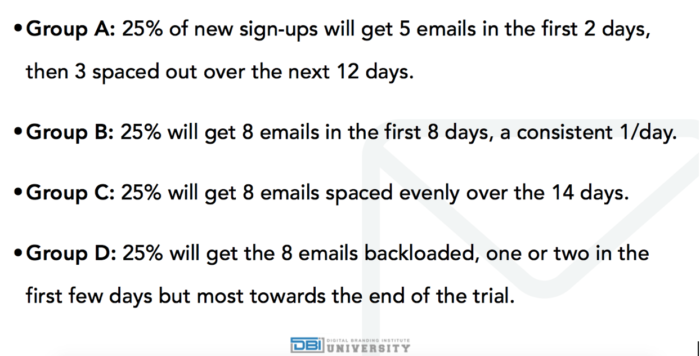
Then analyze the conversion rates for each group to determine the best email timing. Google Analytics can be a great tool when tracking your email usefulness.
Starting a trial like this can make you nervous when your first starting out, but its worth it to know exactly what your email subscribers want and to make the most out of your email newsletters. You might lose a few people in the beginning, but you’ll have the content your subscribers are looking for by the end.
Onboarding Email Strategy Step 5: Add Value to your Onboarding Emails
For musicians, email has always been a good way to reach out to different generations. Their emails are mostly used to invite people to download their MP3s and to build a loyal audience base. However, there are a few nurturing onboarding messages for their new subscribers.
It’s recommended to have onboarding emails that focus on building a relationship and testing how it will impact the reaction of new subscribers to interact with future content.
See the example timeline and procedures:

Start with a short introduction email from the musicians with a focus on building a strong bond.
A few weeks later, subscribers will be given the opportunity to support the artist by buying their latest album and merchandise. But it doesn’t stop there. The subscriber needs an extra push to get them to convert. This is why they need social media and reminder emails.
One action that can give them the extra push is an unexpected gift. Before asking for a purchase, offer a free gift of merchandise along with a personal note from the artist. It doesn’t have to be expensive. It can be an ebook, a free trial, or whatever you think will be appropriate and can build a bond while bringing value to your customers.
This is a great formula for anyone looking to convert their subscribers.

Onboarding Email Strategy Step 6: The Ask
After using motivation, removing barriers, and getting your timing down, it’s time to step out and ask for the SALE!
This is the stage when you’ll convert subscribers into actual paying customers.
In order to do this, you can use your existing data on your users as a strong pull. This can be any information you can collect from your subscribers, such as location, occupation, and so on.
You should also try to mention their history and personal information with how it relates to your business. This reinforces the connection and reminds them of the reason why they want to use your product or service in the first place.
Most important is your use of time crunches. This is a key element because it helps to build anticipation by offering sales for a limited time.
Onboarding Email Strategy Step 7: The Win-Back
You have to understand that subscribers don’t always convert to paying customers. In fact, most of them won’t. So what do you do with all those subscribers who didn’t convert?
You can leave them and ignore them, or you can implement a great win-back email automation system. It seems silly to spend so much time and effort on those users who seem to not be interested in converting. However, these subscribers should still be seen as valuable potential customers for you to win back.
Pinkberry does a nice job of incentivizing subscribers with a good reason to re-engage.
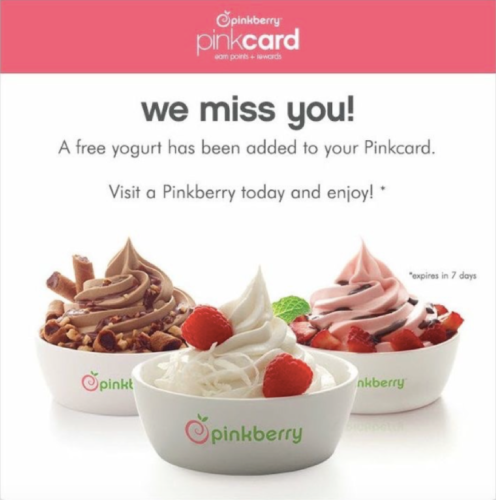
You should be thinking about sending your win-back emails between 7, 21, and 90 days after a user doesn’t convert. They might need your product or service right at that time. Who knows?
Final Thoughts
With all the time you spent gathering emails, the last thing you want to do is let them trickle away because you don’t know how to create an onboarding email strategy. These tips will make sure that your potential customers stay satisfied with their service and appreciative of your brand. Remember to make sure that the emails you send out are for your target audience. Talk to them without being too pushy, this will only push people away. Be you, be real, and be thoughtful.
Do you have an onboarding email strategy?


